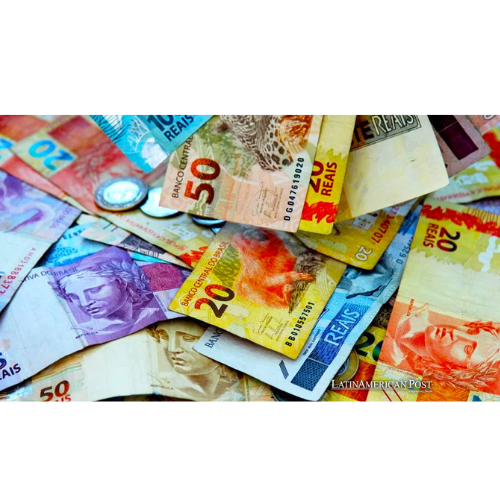Brazil’s Currency Under Pressure: The Real Faces Renewed Volatility
The international spotlight is once again on Brazil’s financial markets, as the Brazilian real (BRL) faces mounting pressure. Trading at 5.44 per U.S. dollar, the currency has endured three consecutive sessions of depreciation, raising concerns among investors and policymakers alike. While the Central Bank of Brazil has rejected claims of a speculative attack, it has acknowledged a sobering reality: the real has already lost nearly 9% of its value against the dollar in 2025.
This volatility reflects the deeper structural weaknesses of Brazil’s economy, exacerbated by political uncertainty and global market turbulence. What we are witnessing is a warning signal about the fragility of Brazil’s economic model.
The Current Scenario: Numbers That Speak
The exchange rate at 5.44 BRL/USD may not seem catastrophic at first glance, but the context matters. Over the past weeks, the currency’s trajectory has been marked by:
- Three straight days of depreciation, intensifying investor anxiety.
- A 9% year-to-date loss, undermining confidence in Brazil’s economic management.
- Rising capital flight, as global investors hedge their exposure to emerging markets.
Political Uncertainty: The Invisible Hand Behind the Real’s Weakness
Brazil’s currency instability cannot be explained without considering the political backdrop. Policy inconsistency, disputes between government branches, and doubts over fiscal responsibility all contribute to the erosion of confidence.
- Fiscal policy questions: Investors are unconvinced about the government’s ability—or willingness—to implement credible spending controls.
- Political fragmentation: Deep divisions within the political system raise questions about the feasibility of passing much-needed reforms.
- Institutional credibility: While the Central Bank maintains some independence, its communication strategy appears reactive rather than proactive.
When politics fail to provide a stable foundation, the currency market quickly becomes the battleground for uncertainty.
The Global Dimension: Strong Dollar, Weak Real
Brazil’s challenges are magnified by global monetary dynamics. The U.S. dollar has strengthened in response to hawkish signals from the Federal Reserve, rising bond yields, and persistent inflationary pressures in developed economies. Emerging markets, as always, are among the first to feel the pain.
For Brazil, this means:
- Higher borrowing costs as capital flees to “safe haven” assets.
- Pressure on inflation, as imports become more expensive.
- Greater challenges for companies with dollar-denominated debt.
The combination of domestic fragility and external shocks makes Brazil’s position uniquely vulnerable.
Why the Central Bank’s Denial Rings Hollow
The Central Bank of Brazil has publicly dismissed the idea that the real is under speculative attack. Yet this statement raises uncomfortable questions:
- If speculation is not the driver, does this mean the weakness is fundamentally tied to Brazil’s structural vulnerabilities?
- If so, the problem is even more serious than a speculative cycle.
- The Central Bank’s communication, rather than calming markets, risks deepening distrust by appearing dismissive.
In global finance, perception matters as much as reality. By downplaying concerns, Brazilian authorities may inadvertently fuel further uncertainty.

Structural Weakness, Not Just Volatility
It is tempting to see currency swings as cyclical. But in Brazil’s case, the current depreciation reflects chronic economic weaknesses:
- Dependence on commodities: Brazil’s growth and fiscal health remain heavily tied to volatile commodity exports.
- Low productivity: Structural reforms to modernize labor markets, taxation, and business conditions remain insufficient.
- Fiscal imbalance: Persistent budget deficits and rising debt make investors skeptical of long-term sustainability.
In this context, the 9% loss of the real in 2025 is less about speculative moves and more about the market’s verdict on Brazil’s fundamentals.
The Consequences: Inflation and Social Pressures
The depreciation of the real has direct consequences for Brazilian society:
- Inflation: A weaker real makes imported goods more expensive, hitting households and small businesses hardest.
- Rising inequality: Inflation erodes purchasing power, disproportionately affecting lower-income groups.
- Policy dilemmas: The Central Bank faces a difficult balancing act: raise interest rates to defend the currency, or maintain accommodative policies to support growth.
In short, currency instability aggravates Brazil’s already fragile social contract.
What Can Investors Expect?
The real’s future trajectory depends on three critical factors:
- Domestic political clarity: If the government can demonstrate fiscal discipline and articulate a coherent economic strategy, markets may stabilize.
- Global monetary policy: Any signal of easing by the U.S. Federal Reserve could relieve pressure on emerging market currencies, including the real.
- Structural reforms: Without deeper reforms, Brazil risks repeating the same cycle of boom-and-bust that has defined its modern economic history.
For investors, this means caution. Opportunities remain in Brazil’s vast domestic market, but currency risk will continue to overshadow potential returns unless the underlying weaknesses are addressed.
Brazil’s currency turmoil is a symptom of deeper economic and political fragility. The real’s 9% decline against the dollar, despite official reassurances, underscores the lack of investor confidence in the country’s fundamentals.
The critical truth is that Brazil must confront its structural issues—fiscal imbalance, political instability, and overreliance on commodities—if it wishes to regain credibility. Otherwise, the volatility of the real will remain a recurring headline in international markets.
For the global investment community, Brazil’s story is a cautionary tale: emerging markets can offer high returns, but without stability and reform, they remain at the mercy of global headwinds and domestic missteps.
